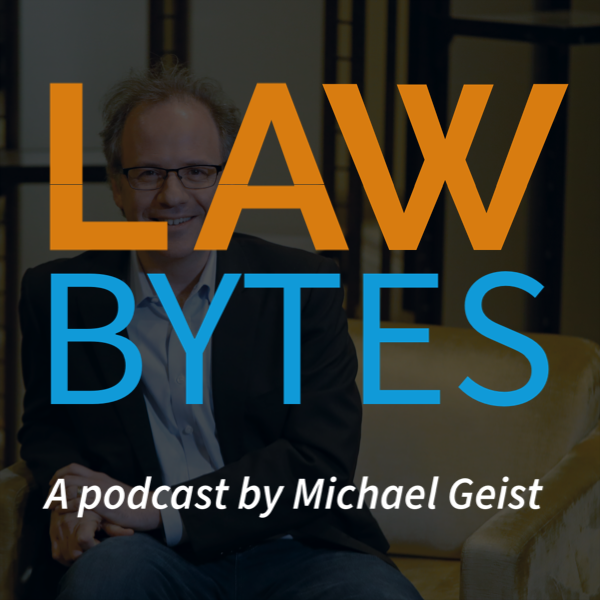Michael Geist:
This is Law Bytes, a podcast with Michael Geist
David Lametti:
What began to happen in Canada, Mr. Speaker and I saw this myself a number of times in my teaching is that American rights holders through American law firms would often allege content infringement in Canada and send out a letter saying you’ve You’ve infringed copyright. We’re going to sue you please pay x thousands of dollars by clicking on this link and we will forget this. And sadly Mr. Speaker a number of people didn’t realize that this kind of claim was actually being made against Canadian law in contravention of Canadian law and actually paid out.
Michael Geist:
Copyright threats and lawsuits against individuals have been around for awhile. The Canadian Recording Industry Association, which now calls itself Music Canada, led the charge way back in 2003 with threats to sue Napster users. Lawsuits were launched a year later but were rejected by the Federal Court citing a confluence of concerns involving evidence privacy and the state of Canadian copyright law. Those threats receded for about a decade but now they’re back. Copyright notices, litigation threats, settlement demands, and actual lawsuits have reemerged at the very time the music and movie industries are experiencing record streaming revenues and massive popularity of online services. There’s a lot of confusion and concern about what’s happening. What the notices mean,the implications of the threats and lawsuits, and where Canadian law stands on the issue. Here to help sort through what’s going on is James Plotkin, a lawyer with Casa Saikeley in Ottawa who has taken on several of these copyright cases.
Michael Geist:
Grateful to you for coming on and helping unpack a little bit what’s taking place. I feel like for this episode in particular we need the caveat this is not legal advice we’re having a conversation about our understanding of the law.
James Plotkin:
Of course I would never give legal advice into a microphone at a podcast.
Michael Geist:
Good to hear no nor should you. So why don’t we start by clarifying the difference between the threats that people are seeing often times through the notice and notice system as opposed to the lawsuits and why don’t we start with the threats and the notice and notice system.
CBC News:
Did you hear the one about the 86 year old grandmother who is facing a five thousand dollar fine for illegally downloading a zombie killing video game. It’s no Halloween joke. Ontario’s Christine McMillan recently received two emails claiming she had illegally downloaded Metro 2033. She says she’s innocent and insists her wireless connection may have been hacked. Well guilty or not, McMillan is one of tens of thousands of Canadians who received similar notices. Part of the new rules that came came in under changes to Canada’s Copyright Act.
James Plotkin:
The notice notice system came in 2012 when Canada modernized its copyright legislation and this was heralded as a quote unquote made in Canada approach to dealing with online piracy of music, films and other copyrighted content. This was in juxtaposition with the notice and takedown system that was in effect and has been in effect in the United States since about 2000 under their copyright legislation called the Digital Millennium Copyright Act. And so the way the notice and notice system works essentially is a rights holder may send a notice of purported infringement or notice of infringement to an ISP and the ISP then without actually disclosing the identity of the subscriber forwards that to the subscriber with usually an introductory text saying you know we received this from the rights holder. We have not verified its veracity but here it is. And then the content of the notice comes to the individual.
Michael Geist:
So the any piracy agency or the rights holder whoever happens to be sending these notices doesn’t know the end of the identity of the individual and the ISP isn’t disclosing it. They’re merely serving as a conduit to transfer on this message.
James Plotkin:
Correct. And that’s under the notice and notice regime and I’m sure we’ll talk a little bit more about some other mechanisms that rights holders are used to in fact get at that information. But the notice and notice is an administrative process essentially that’s supposed to act as an educational and deterrence tool to individuals who hopefully by receiving one or more of these notices will curb whatever habits that they have been doing online to the extent that those individuals subscribers themselves actually have done the infringement. That’s a totally different matter. They may not have been the individuals who infringed if anyone did at all.

